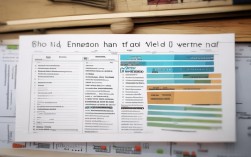Understanding how to describe individuals in English is essential for effective communication. Whether discussing physical appearance, personality traits, or professional roles, having a rich vocabulary allows for precise and engaging expression. This article explores key terms across different categories, helping readers expand their language skills.

Physical Appearance
Describing how someone looks requires specific adjectives and nouns. Here are some common words:
- Height: Tall, short, average, petite (for women), lanky (very tall and thin)
- Build: Slim, muscular, stocky, lean, curvy, overweight
- Hair: Straight, wavy, curly, bald, spiky, shoulder-length, blonde, brunette, auburn
- Face: Oval, round, square, angular, freckled, wrinkled, youthful
- Eyes: Almond-shaped, round, deep-set, piercing, hazel, blue, bloodshot
Example: "She had piercing green eyes and shoulder-length auburn hair."
Personality Traits
Character descriptions help convey someone’s nature. These terms are often adjectives:
- Positive Traits: Kind, generous, witty, charismatic, dependable, optimistic
- Negative Traits: Moody, arrogant, selfish, indecisive, pessimistic
- Neutral Traits: Reserved, introverted, extroverted, analytical, pragmatic
Example: "His pragmatic approach to problem-solving made him an excellent manager."
Professions and Roles
Different careers and social roles have distinct terms:

- Medical Field: Doctor, surgeon, nurse, pharmacist, therapist
- Education: Teacher, professor, tutor, principal, librarian
- Business: Entrepreneur, CEO, manager, accountant, consultant
- Creative Fields: Artist, writer, musician, actor, designer
Example: "As a renowned architect, she designed sustainable buildings worldwide."
Emotions and Moods
Expressing feelings accurately enhances communication:
- Happiness: Joyful, cheerful, delighted, ecstatic
- Sadness: Melancholic, heartbroken, gloomy, somber
- Anger: Furious, irritated, resentful, livid
- Fear: Anxious, terrified, panicked, apprehensive
Example: "After the surprise party, he felt genuinely delighted."
Relationships
Terms for interpersonal connections:
- Family: Parents, siblings, cousins, relatives, guardian
- Romantic: Partner, spouse, fiancé, boyfriend, girlfriend
- Friendship: Best friend, acquaintance, colleague, mentor
Example: "Her mentor provided invaluable career advice."

Idioms and Expressions
Some phrases describe people figuratively:
- "A social butterfly" – Someone very outgoing
- "A dark horse" – A person with hidden talents
- "The life of the party" – Someone who energizes social gatherings
Example: "Though quiet at work, he was the life of the party on weekends."
Cultural and Historical Figures
Certain words describe influential people:
- Leader: Visionary, pioneer, revolutionary, activist
- Artist: Maestro, virtuoso, prodigy, icon
- Thinker: Philosopher, scholar, theorist, intellectual
Example: "As a civil rights activist, she fought for equality."
Practical Usage Tips
- Context Matters – Choose words fitting the situation. "Stubborn" can be negative, but "determined" is positive.
- Avoid Stereotypes – Descriptions should be respectful and accurate.
- Combine Terms – Use multiple adjectives for vivid descriptions.
Example: "The determined young athlete trained tirelessly."

Mastering these words enhances both written and spoken English. Whether writing a story, giving a presentation, or simply conversing, a strong vocabulary makes communication clearer and more engaging. Observing how native speakers use these terms in books, films, and daily interactions can further improve fluency.



